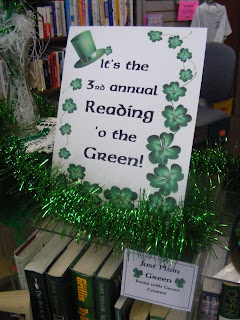St. Patrick's Day is celebrated on March 17, his religious feast day and the anniversary of his death in the fifth century. For hundreds of years this day was a religious holiday in Ireland. On St. Patrick's Day, which falls during the Christian season of Lent, Irish families would traditionally attend church in the morning and celebrate in the afternoon. Lenten prohibitions against the consumption of meat were waived and people would dance, drink, and feast-on the traditional of Irish bacon (now corned beef) and cabbage.
St. Patrick was born around the year 385 in a village in Wales. When he was sixteen, Irish raiders took many of the young village men back to Ireland as slaves. Patrick worked for six years as a herdsman in the Irish countryside. In his sixth year, he escaped, but soon heard a voice telling him to convert the Irish to Christianity. He spent 12 years in France studying religious texts and visiting numerous monasteries. When Patrick returned to Ireland, he founded monasteries, schools and churches, and converted much of the population to Christianity. He and his workers transformed many pagan rites into Christian traditions.
Wearing of the Green Goes Global-
St. Patrick's Day is celebrated by people of all backgrounds in the United States, Canada, and Australia, as well as further afield in Japan, Singapore, and Russia. The Irish government began a national campaign in 1995 to use St. Patrick's Day as an opportunity to drive tourism and showcase Ireland to the rest of the world. In 2006, nearly a million people took part in Dublin's St. Patrick's Festival, a multi-day celebration featuring parades, concerts, outdoor theater productions, and fireworks shows.
In the United States, the first St. Patrick's Day parade was on March 17, 1762 when Irish soldiers serving in the English military marched through New York City. For the next 35 years, the parade helped the soldiers and immigrants reconnect with their Irish roots, as well as fellow Irishmen serving in the English army. "Irish Aid" societies, like the Friendly Sons of Saint Patrick and the Hibernian Society were formed and each group held annual parades featuring bagpipes and drums (previously popular in the Scottish and British armies).


No comments:
Post a Comment